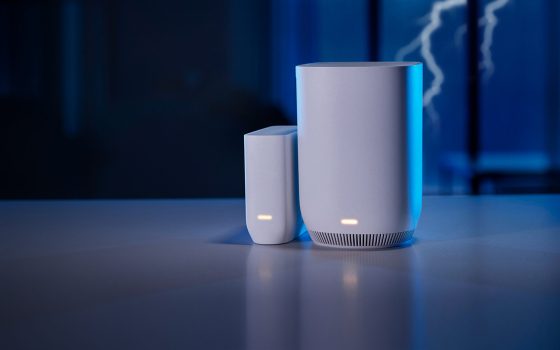A well-known telecommunications operator presented a router with battery: the goal is to always keep the Internet connection active, even in the event of blackout electric. Increasingly frequent and, unfortunately, violent thunderstorms also follow one another in our latitudes. Have a network connection always working has become an essential requirement for many companies as well as for private users.
The US Comcast is the first provider to offer a device with backup connectivity designed to keep customers connected during a thunderstorm. Comcast’s battery-powered router integrates 10GbE ports and WiFi 6 support. In addition, in addition to managing access from a fixed location through the ultrabroadband in optical fiber, it also hosts a modulo radio 4G/5G: when the device suffers a outage from the wall outlet and the built-in battery comes into operation, the router activates the backup link on mobile network. This happens if it is not possible to re-establish, after a maximum time of 30 seconds, a working cable connection with the operator’s devices.
As described in the router card, the battery is able to ensureautonomy up to 4 hours: a good value considering that the average time for overseas blackouts is around two hours.
Is the battery-powered router really a good idea?
Actually, in the case of dual WAN routers, the function of failover it’s been around for a lifetime and it’s certainly not an invention of Comcast, the largest cable operator in the US. Many router for Internet access from fixed locationFurthermore, they integrate the possibility of connecting to broadband and ultra-broadband networks (xDSL and fiber) but also accept a SIM card. The latter also allows you to establish a connection with the mobile network and can possibly be used as a backup connection.
Some models of Fritzbox routers, for example, distinguished by initials 5G o LTE in the name, they respectively integrate the additional support for connections with the mobile network (5G or LTE multiband).
If anything, what is missing is one drums to power the device in the event of temporary unavailability of the electricity grid.
How to power a router in the event of a power outage
To power a router during a power outage and stay online from all connected devices, such as those connected in wifi mode and in turn equipped with a battery, the most obvious solution is to choose an uninterruptible power supply or UPS (Uninterruptible Power Supply). When a power failure occurs, theUPS it will continue to supply power to the router for a certain amount of time, allowing the router to stay on and keep the connection alive.
To estimate the operating time of the UPS with a router connected, you need to know the power of the router in Watts and the capacity of the UPS (in VA or W). After that, you can use the following formula:
Tempo di funzionamento (in ore) = Capacità dell'UPS (in Wh) / Consumo energetico del router (in W)
For example, having a 500VA UPS (equivalent to about 500W) and a router that consumes 10W, the calculation would be:
Tempo di funzionamento = 500 W / 10 W = 50 ore
In other words, a router that consumes an average of 10W could be powered for about 50 hours. Obviously this is an estimate as the power consumption of the router varies with specific usage and conditions. Many UPSs also provide software or a display that displays theautonomy expected based on the current load.
Powering the router with an external battery – the WiFi soap solution
Some routers have USB ports or other types of power inputs that you can plug into one external battery. Of course, this is a temporary solution that depends on the battery capacity and power consumption of the router.
Devices that can be powered in this way are often WiFi soap bars, routers so called because of their format. It’s about travel routers which, however, can easily allow the activation of a backup connection even at home or in the office in the event of a blackout. They indeed host a SIMare equipped with an integrated battery and – as mentioned – their autonomy can be extended with a power bank or a portable battery that can be connected via USB cable.
Comcast, therefore, is not exactly the “invention of the century”: with a little preparation it is in fact already possible today to set up a very similar configuration and continue to send and receive data over the network even in the absence of electricity.
The opening image is from Comcast and is taken from the press release.

